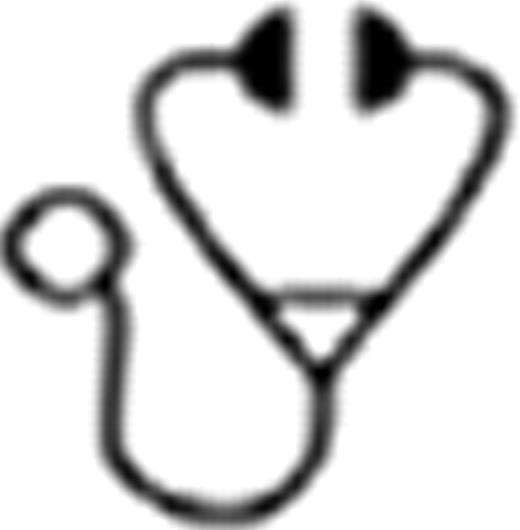Abstract
Patients with relapsed or primary refractory AML have a dismal prognosis. Even salvage therapy with allogeneic hematopoietic cell transplantation (HCT) could not improve outcome due to high incidence of relapse and high non-relapse mortality (NRM). Recently, promising results in patients with unfavorable karyotype or treatment refractory AML have been reported using a sequential treatment with aplasia inducing chemotherapy consisting of Fludarabine, Ara-C and Amsacrine (FLAMSA) followed within 3 days by reduced intensity conditioning (RIC) for allogeneic HCT (Schmid et al., Blood 2006 Aug 1;108(3):1092–9).
We report a retrospective analysis of our single center experience with FLAMSA-RIC in primary refractory or relapsed AML patients. We searched our database for patients receiving FLAMSA-RIC in the past 10 years. Details on characteristics and clinical course of the patients were confirmed by retrospective chart review.
We retrospectively identified and analyzed 51 consecutive patients (f=22, m=29) transplanted after FLAMSA-RIC at our institution from 2006–2011. At time of HCT patients were refractory after chemotherapy (n=22) or had an untreated relapse (n=29). Data on molecular and cytogenetic markers were available in 36 and 44 patients, respectively. 34 were initially high-risk because of unfavorable karyotype (n=25) or molecular genetic alterations (n=9). Median age of patients was 56 years (range, 20–72) and diagnosis of all patients was acute myeloid leukemia (de-novo AML, n=27, secondary AML, n=24). FLAMSA (Fludarabine 30 mg/m2 day −12 to −9, AraC 2000 mg/m2 day −12 to −11 and Amsacrine 100 mg/m2 day −12 to −9) was used as salvage therapy followed by RIC (Fludarabine 30 mg/m2 day −5 to −4/Busulfan 0.8 mg/kg day −6 to −4, n=10; TBI 4Gy on day −5/Cyclophosphamide 60 mg/kg on day −4 to −3, n=28; Busulfan 0.8 mg/kg day −6 to −4/Cyclophosphamide 60 mg/kg for matched and mismatched unrelated donors (MUD/MMUD) or 40 mg/kg for matched related donors (MRD) on day −3 to −2, n=13). As GVHD prophylaxis calcineurin inhibitor combined with mycophenolate mofetil and anti-thymocyte globuline (ATG-Fresenius®, 10 mg/kg for MRD and 20 mg/kg for MUD/MMUD) was used. 10 patients were transplanted from MRD, 16 from MUD, 21 from a MMUD and 4 from a MMRD. 14 patients received DLI (2 × 106 - 1 × 108 /kg after a median of 186 days, range 72–922) in absence of GVHD in case of mixed chimerism or relapse after HCT. Current overall survival (OS) was 18/51 patients with a median follow-up of 410 days (range, 179–1557) of patients alive resulting in a Kaplan-Meier estimated 2-year OS and event-free-survival (EFS) of 34% and 29%, respectively. There was no significant difference between the different RIC regimens with 50% Fludarabine / Busulfan vs. 26% TBI 4Gy / Cyclophosphamide and 40% Fludarabine / Busulfan (p=0.37). Causes of death were relapse (n=19), infections (n=5), GVHD (n=2), multi-organ-failure (n=5), cerebral hemorrhage (n=1) and progressive multifocal leukencephalopathy (n=1). Cumulative incidence of relapse at 2 years with death due to NRM as competing risk was 40% and cumulative incidence at 2 years of NRM with death due to relapse as competing risk was 27%. 2-year OS was inferior in patients with secondary AML compared to patients with de-novo AML (28% vs. 38% p=0.79). The outcome in the elderly subgroup defined by age ≥60 years (median age 67, n=22) was similar to the group of younger patients (median age 46, n=29) with 2-year OS of 31% vs. 37% (p=0.87). Patients with a blast count < 10% in the bone marrow at time of HCT had a better outcome with 64% vs. 25% OS (p=0.09). 2-year-OS was inferior in patients being refractory after chemotherapy (25% vs 38%, p=0.78). Incidence of acute GVHD (aGVHD) ≥II and chronic GVHD (cGVHD, limited, n=11, extensive, n=3) was 22% and 27%, respectively. Presence of aGVHD did not influence survival while presence of cGVHD was associated with an improved overall survival after HCT (58% vs 24%, p=0.009).
FLAMSA-RIC followed by allogeneic HCT enables long-term disease free survival, even in primary refractory or relapsed AML patients. The sequential approach of this regimen seems to overcome the dismal prognosis of these patients. Its moderate toxicity allows the application of this curative salvage therapy option even in an elderly patient population.
Off Label Use: The use of some agents in the conditioning is off-label.

This icon denotes a clinically relevant abstract
Author notes
Asterisk with author names denotes non-ASH members.

This feature is available to Subscribers Only
Sign In or Create an Account Close Modal